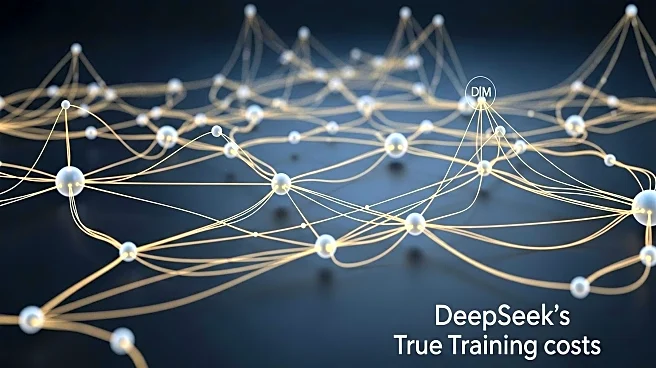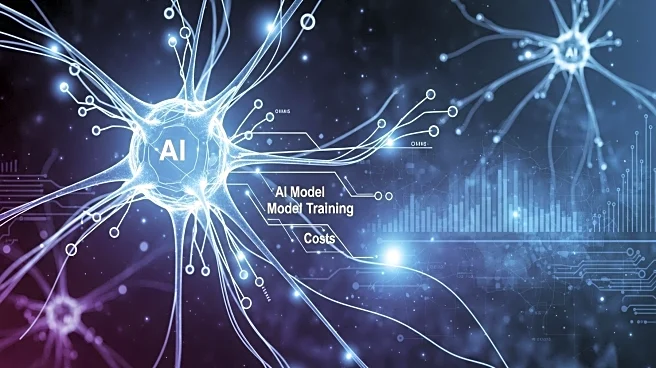What's Happening?
DeepSeek, a prominent Chinese AI company, recently published a report in the Journal Nature detailing the compute resources required to train its flagship AI model, R1. Initial reports suggested that the model was trained for a mere $294,000, a figure that sparked confusion and debate. However, the actual cost was significantly higher, approximately 20 times the reported amount. The misunderstanding arose from supplementary information that focused on the reinforcement learning phase of the model's development, which is a post-training process. This phase involved using 64 eight-way H800 boxes totaling 512 GPUs for 198 hours, plus additional time for supervised fine-tuning datasets. The true cost of training the base model, DeepSeek V3, was around $5.87 million, involving 2,048 H800 GPUs over two months, totaling 2.79 million GPU hours.
Why It's Important?
The revelation about DeepSeek's actual training costs highlights the significant financial investment required in AI model development, challenging perceptions of cost efficiency in AI training. This has implications for the competitive landscape between Chinese and Western AI developers, as it dispels the notion that DeepSeek's models are cheaper to train than their Western counterparts. The comparison with Meta's Llama 4 model, which required similar compute resources, underscores the substantial resources needed for cutting-edge AI development. This could influence future investments and strategies in AI research, as stakeholders reassess the cost-benefit balance in AI model training.
What's Next?
The clarification of DeepSeek's training costs may prompt further scrutiny and transparency in AI development expenses across the industry. Stakeholders, including investors and policymakers, might push for more detailed disclosures to better understand the financial and technical requirements of AI advancements. This could lead to more informed decision-making regarding funding and regulatory measures in AI research. Additionally, the debate over cost efficiency might drive innovation in reducing training expenses, potentially leading to new methodologies or technologies that optimize resource use in AI model development.
Beyond the Headlines
The misunderstanding surrounding DeepSeek's training costs also raises questions about the communication and reporting practices in the AI industry. It highlights the need for clearer distinctions between different phases of AI model development, such as pre-training and reinforcement learning, to avoid misinterpretations. This incident may encourage more rigorous standards in reporting AI research findings, ensuring that stakeholders have accurate information to base their decisions on. Furthermore, it underscores the complexity of AI development, where costs are not only tied to hardware but also encompass data acquisition, cleaning, and other preparatory processes.










